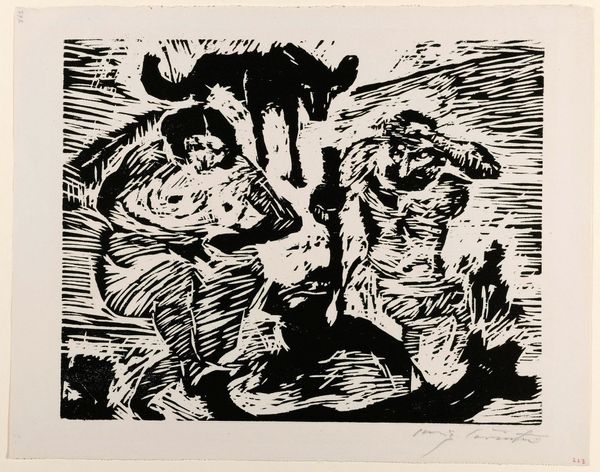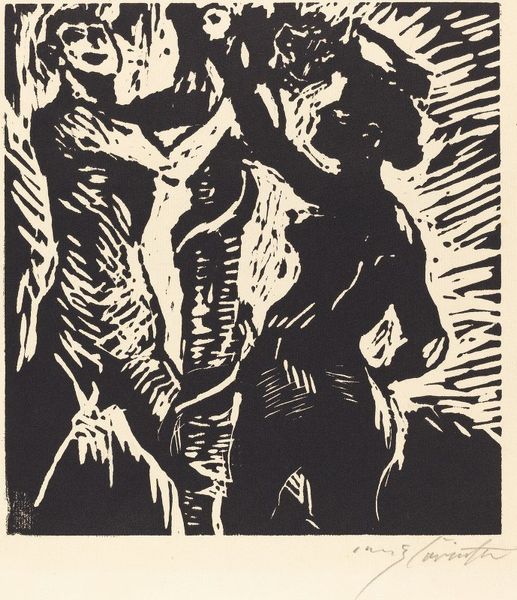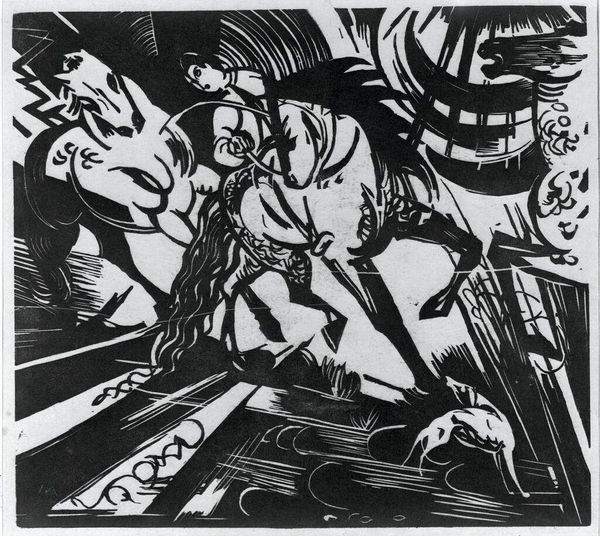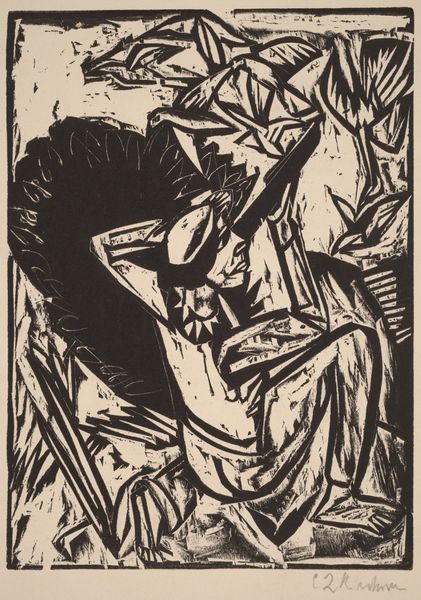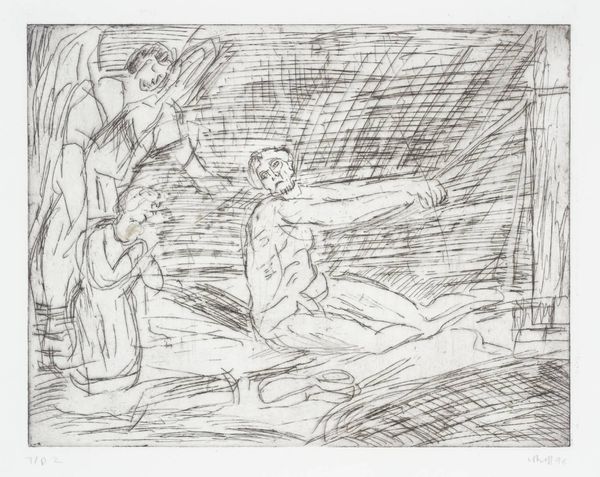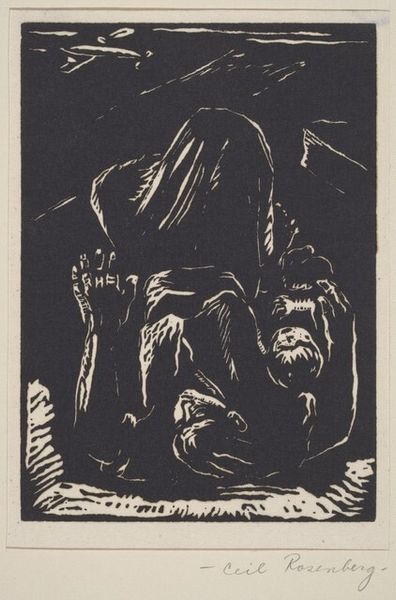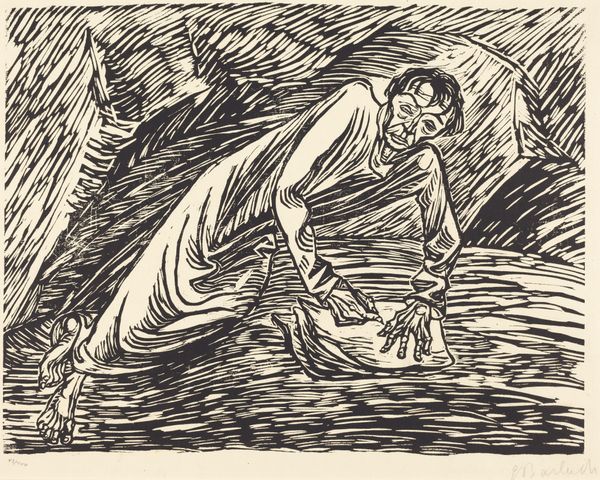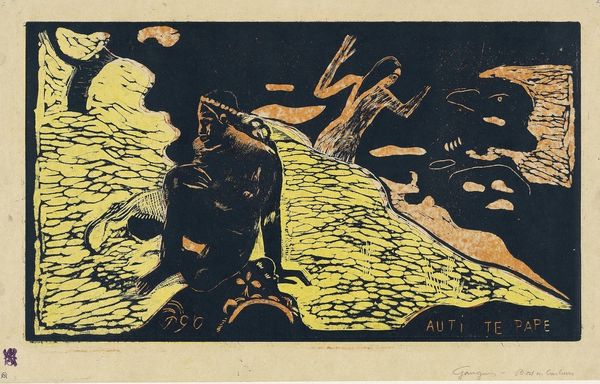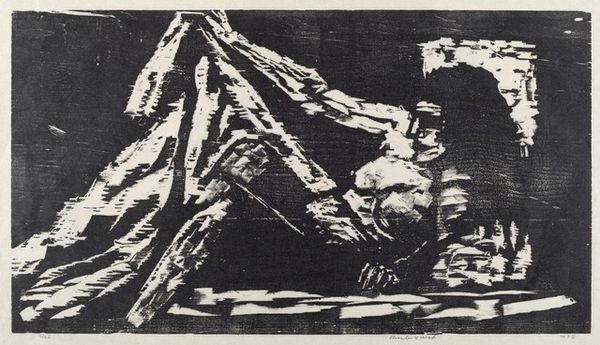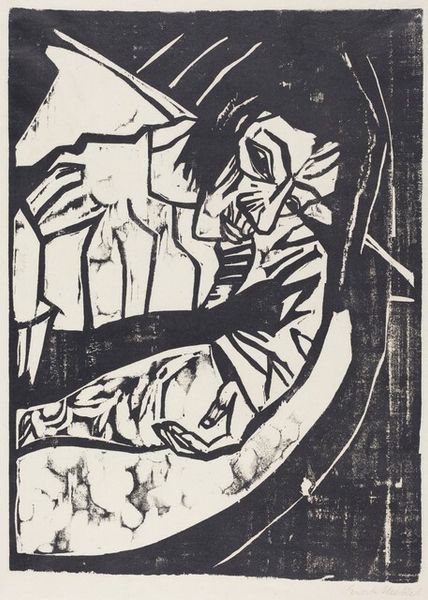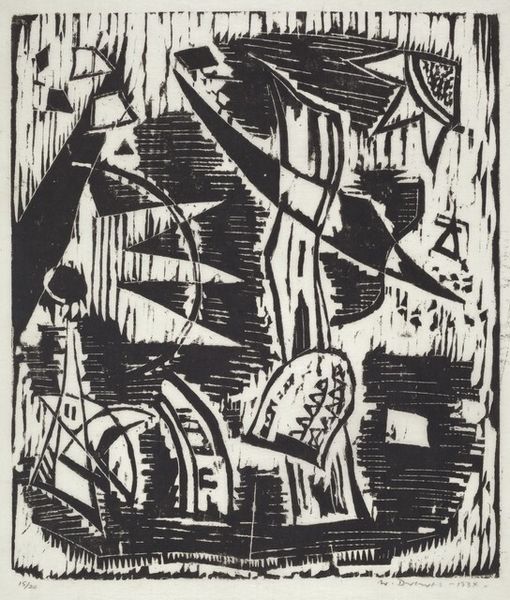
woodcut
#
narrative-art
#
german-expressionism
#
figuration
#
abstract
#
ink line art
#
expressionism
#
woodcut
#
history-painting
Copyright: Public Domain: Artvee
Curator: This woodcut from 1919, entitled "Cain and Abel," is by the German artist Lovis Corinth. What strikes you most about it? Editor: Well, the sheer brutality, even in the abstraction. The stark black and white contrast intensifies the violence, doesn’t it? There's a raw, immediate impact to this scene. Curator: Indeed. As a woodcut, the piece relies heavily on the material properties of the woodblock and the tools used to carve it. The act of removing material to create the image is integral to understanding its aggressive aesthetic. Notice how the lines create a sense of urgency? Editor: It's fascinating how Corinth utilizes this simple palette to tap into something so profoundly dark. Cain and Abel, after all, are primal figures in the human drama, representing envy, betrayal, and the very first murder. Look at Abel's reaching hand, a clear symbol of innocence destroyed. Curator: The deliberate mark-making evokes the labour involved in creating the work itself, almost mirroring the physical act of Cain's violence. Furthermore, remember that Corinth, alongside other artists, was grappling with the aftermath of WWI, a context in which notions of brotherhood and morality were thoroughly shattered. Editor: Yes, this echoes humanity's brutal capability towards itself and in the stark binary we see the artist may have sought to capture that basic, unyielding truth about human nature. Even in the angular forms and abstraction, the essential horror shines through. Curator: Exactly. I think by choosing woodcut—a decidedly “low” artform compared to painting—Corinth democratized the image of fratricide. Its relative affordability meant it could reach a wider audience, offering a potent commentary on the societal fractures of his time. Editor: And through these archetypes Corinth gives new depth and feeling, doesn’t he? As a cultural symbol, Cain and Abel resonates through history, a cautionary reminder about the fragility of peace and the ever-present potential for human cruelty. Curator: I see it instead as a commentary on the role of production itself, in replicating and embedding ideas. Thank you for giving us a window into the symbolism behind it. Editor: And thank you for pointing towards the power in its mode of creation.
Comments
No comments
Be the first to comment and join the conversation on the ultimate creative platform.
